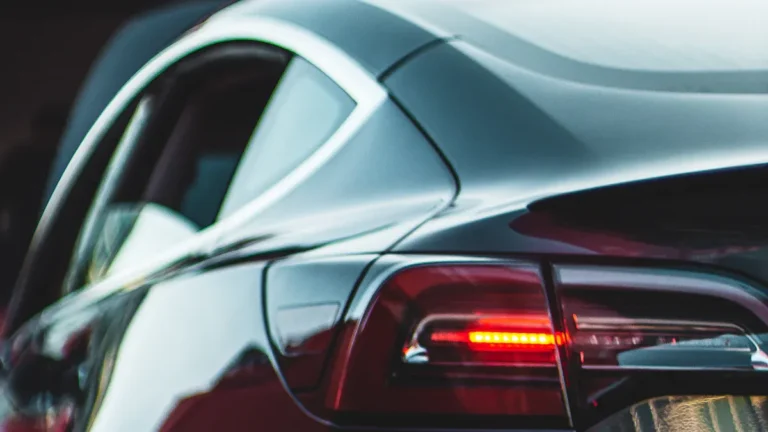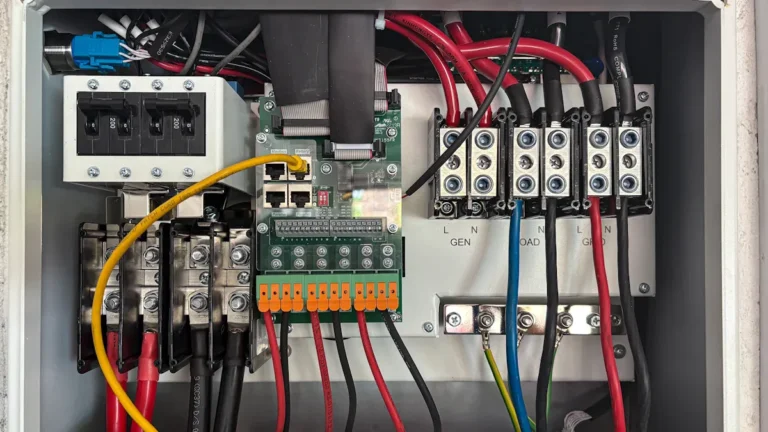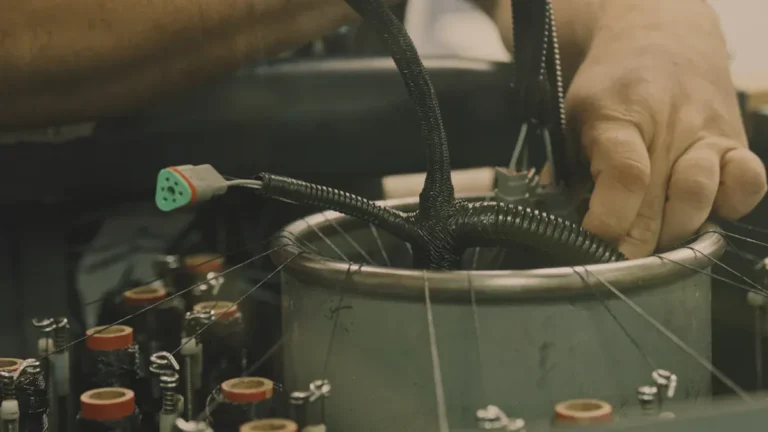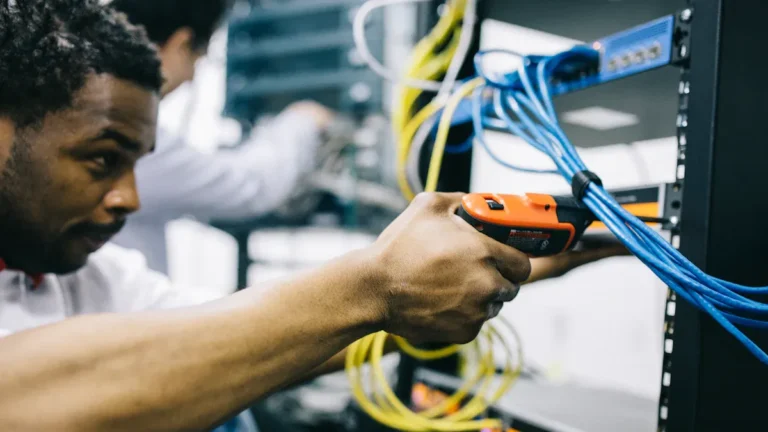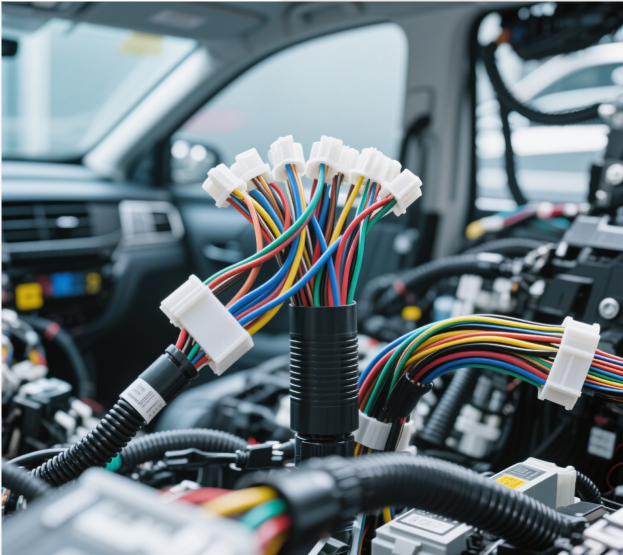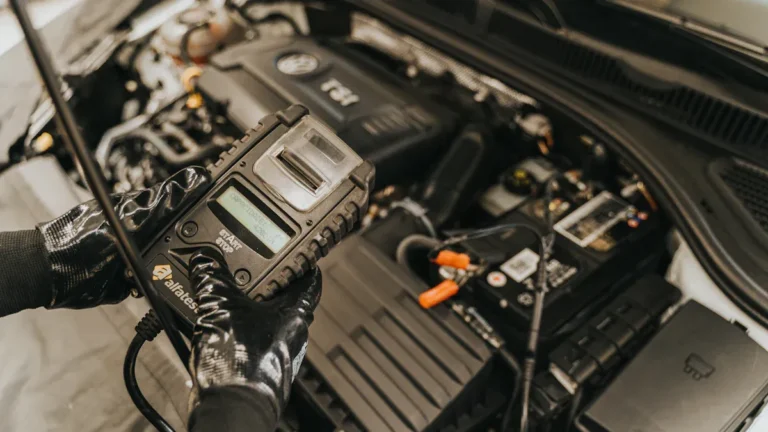Wire Harness Assembly Process in Automotive Manufacturing

You need wire harness assembly to link and power each system in your car. This process is very important in making cars today. It helps your car work safely and well. The world’s automotive wire harness market was worth over $50 billion in 2023. Experts think it will keep growing until 2030.
Year | Market Size (USD Billion) | Notes |
|---|---|---|
2023 | 50.09 | Base year market size |
2024 | Estimated market size | |
2030 | 63.00 | Projected market size |
Yueqing Chengli Electronic Technology Co., Ltd. is a top company in this field. They make strong, dependable, and earth-friendly wire harness solutions for cars. Their work on quality and new ideas helps you reach the best safety and performance levels.
Key Takeaways
Wire harnesses link and power all electrical parts in cars. They help keep cars safe and working right. The assembly process has steps like wire preparation, crimping, routing, covering, labeling, testing, and packaging. These steps help make strong and reliable harnesses. Using industry rules and quality checks makes harnesses safe, tough, and good for the environment. Workers use both hands-on skills and machines. This makes building harnesses faster, more exact, and flexible. Custom wire harnesses are made for special cars. They also help new tech like electric and hybrid cars.
Wire Harness Assembly Overview
What Is a Wire Harness?
When you look under a car’s hood, you can spot a wire harness. In car factories, a wire harness is a group of wires or cables put together. These wires are wrapped in a rubber or vinyl cover. The bundle sends electrical signals all over the car. This setup keeps wires tidy and safe. It makes sure each part gets the power and information it needs. Making a wire harness means putting many wires into one package. This helps stop wires from getting messy or dangerous.
Role in Automotive Systems
Wire harnesses are very important in today’s cars.
Wire harnesses link electrical parts, so power moves well and safety features like airbags and ABS work right.
Good design stops energy from being wasted. This helps the engine and transmission work better, saves fuel, and lowers pollution.
The size and shape of the harness can change how much gas a car uses and how it drives.
Smart harnesses help parts talk to each other and get checked, which makes cars safer and more efficient.
Strong insulation keeps out water, heat, rubbing, and other signals, so problems do not happen often and the harness lasts longer.
Things like strain relief and shielding keep the wires working, even if the car shakes or faces tough roads.
Wire harnesses also give power and data to locks, sensors, and security parts. Making wire harnesses for new cars is a big and tricky job. This shows how much cars need these systems to be safe and work well. The harness must be safe from heat, water, and shaking. This stops problems that could lead to accidents or fires. Fireproof materials and careful checks help keep your car safe. Good planning and design save space, make fixing things easier, and stop electrical problems.
Industry Standards
Wire harnesses for cars must follow strict rules.
IATF 16949 gives the rules for quality in car making.
ISO 9001 is about making sure products are made well.
ISO 14001 makes sure factories care for the environment.
VDA 19.1 (ISO 16232-10) sets rules for keeping parts clean.
These rules help make sure wire harnesses are safe, last long, and work well. They also help car makers protect the environment.
Wire Harness Assembly Process

The wire harness assembly process has many steps. Each step helps make a safe and good wiring harness. Yueqing Chengli Electronic Technology Co., Ltd. follows strict rules like ISO 9001 and IATF 16949. They also use UL and CE standards. Their process uses new tools and earth-friendly materials. This makes sure every harness works for your needs.
Wire Preparation
First, you get the wires ready. You pick the right type, length, and color for each wire. Machines cut and strip wires fast and with care. These machines use stepper motors and special blades. They can handle many wire sizes. This means less hand work and fewer injuries. AR work instructions can help you follow each step. This technology makes the job quicker and more exact.
Crimping and Soldering
Next, you connect wires to terminals by crimping or soldering. Crimping is used most in car wire harnesses. It gives strong and bendy connections that last long. You use special tools that fit the terminal type. For big wires, you need impact die crimpers. Soldering is best for small wires or special jobs. You must heat the iron to the right level. Heat shrink tubing covers the joint to protect it. Self-soldering connectors can make the job easier and cleaner. Always seal the joints to keep out water and dirt.
Crimped joints stay bendy and fight shaking.
Soldered joints need care to stop weak spots.
Heat shrink tubing with glue protects both types of joints.
Terminal Assembly
You put terminals on wires and check each one. You follow the IPC/WHMA-A-620 standard to make sure each terminal is safe. Lean methods like 5S and Kaizen keep your area neat and fast. Training helps you and your team do better work. You set up checks during the process to find problems early. Reviews and feedback help you get better.
Use hands-on training to keep skills strong.
Place checks at every step.
Review and change your process often.
Routing and Bundling
You group wires into bundles and route them on the harness board. This keeps wires neat and safe from harm. You keep power and signal wires apart to stop electrical noise. Shielded wires, twisted pairs, and sleeves block noise and heat. Cable ties and clips hold bundles in place. You run wires through special paths in the car frame to keep them safe.
Method | Description |
|---|---|
Keep high-power wires away from signal lines to avoid noise. | |
Use Shielded Wires | Add shields to lower electromagnetic noise. |
Twisted Pair Cables | Twist wires together to block out noise. |
Wire Protection | Use sleeves and grommets to guard against heat and rubbing. |
Routing Channels | Guide wires through safe paths in the car. |
Cable Ties and Retaining Clips | Bundle and hold wires to stop movement. |
Heat/Thermal Considerations | Use heat-safe covers near hot parts. |
Protective Coverings
You add covers to make the harness strong and safe. You use PVC, Teflon, or silicone for insulation. These covers fight heat, chemicals, and water. Overmolding and strain relief stop wires from bending or breaking. Flame-proof coatings lower fire risks. Waterproof connectors and seals keep out water and dirt. UV-safe covers help if the harness is outside. Yueqing Chengli uses earth-friendly materials that meet European rules. This gives you safety and helps the planet.
Sleeves and wraps stop rubbing damage.
Special coatings stop rust and help electricity flow.
Seals keep the harness safe in tough places.
Labeling and Marking
You label each wire and bundle so you can fix them later. You use heat shrink sleeves, wrap labels, or wire flags. These labels stay on even in hard places. You follow UL and ISO 9001 rules for clear, lasting labels. Good labels help with repairs, upgrades, and safety checks.
Labeling Method | Description | Application & Benefits |
|---|---|---|
Tubes that shrink around wires when heated. | Strong, chemical safe, permanent ID. | |
Wrap-Around Wire Labels | Sticky labels wrapped around wires. | Cheap, reliable, easy to use. |
Self-Laminating Labels | Printed part with a clear cover tail. | Easy to put on, print stays safe. |
Wire Flags & Tags | Labels that stick out for easy reading. | Good for big wires and many data lines. |
Testing and Inspection
You must test and check every harness before shipping. The process has many kinds of tests. You look for damage, check insulation, and test each connection. You also do high voltage and bending tests to see if the harness is strong. Environmental tests check how the harness handles heat, cold, and chemicals. You use tools like microscopes and digital cameras to find small problems. Yueqing Chengli follows strict rules to meet world standards.
Look for damage or mistakes.
Test for electrical flow.
Check insulation for safety.
Test with high voltage for strength.
Bend and shake to test toughness.
Test for heat and water.
Test for current and voltage.
Check if it works in real life.
Tip: Always test each joint to find problems before the harness goes in a car.
Final Packaging
You finish by packing the harnesses for shipping. You use strong covers to keep the harness safe while moving and storing. Clear instructions help you and customers handle the harness right. Yueqing Chengli uses earth-friendly packaging and good shipping to deliver products safe and on time.
Manual vs. Automated Assembly

Manual Assembly
Manual assembly is used a lot in making wiring harnesses for cars. Workers use their hands to cut, strip, crimp, and move wires. This way lets people be creative and flexible, especially with tricky or special harnesses. People can work with many wire types, shapes, and sizes carefully. Sometimes, cobots help by doing boring jobs, which makes things easier.
Aspect | Advantages | Disadvantages |
|---|---|---|
Flexibility | Skilled workers do hard and different jobs | Not fast for making lots of harnesses |
Adaptability | Good for many wire types and custom work | Can make workers tired or stressed |
Quality | Cobots help make work more exact and steady | More mistakes and higher costs |
Cost | Good for small orders or testing new ideas | Hard to teach robots tricky jobs |
Manual assembly is still used because some jobs are too hard for machines. But it can be slow and mistakes can happen, like putting wires in the wrong spot or not crimping well.
Automated Assembly
Automated assembly uses machines and robots to make things faster. In car factories, robots and machines cut, strip, and crimp wires. These machines do jobs very accurately and the same way each time. There are also laser machines and testers that check for problems right away. Digital twin technology lets you try out designs on a computer before making them.
Machines test for mistakes before shipping.
Automation makes the process quicker and lowers mistakes. Machines work faster than people and keep the quality the same.
Hybrid Methods
You can mix manual and automated ways to get the best results. In many factories, machines cut and crimp wires, but people do the routing and final steps. This way uses both the speed of machines and the careful work of people. Modular cells and cobots help teams work together. Hybrid methods let you change plans or make more or fewer harnesses as needed.
Tip: Use both manual and automated ways when you need to work fast and handle tricky or special harnesses.
Impact on Quality
How you build harnesses changes the quality. Manual assembly can have more mistakes because people mess up sometimes. Automated assembly is more exact, faster, and makes fewer errors. Machines can be accurate within ±50 microns, which is important for car safety. Automation also saves materials and lowers worker costs.
Aspect | Manual Assembly | Automated Assembly |
|---|---|---|
Error Rate | More mistakes | Fewer mistakes |
Precision | Depends on the worker | Very exact |
Production Speed | Slower | Faster |
Material Use | More waste | Less waste |
Automation helps you follow car rules and always make good harnesses.
Wire Harness Production Considerations
Material Selection
You must pick the best materials for making a wire harness. The materials you choose decide how safe and strong your harness is. They also affect how long it will last. There are different rules to help you pick the right materials. The table below shows how these rules guide your choices:
Standard | Conductor Material | Insulation Types & Temp Ratings | Key Material Criteria | Performance Impact |
|---|---|---|---|---|
AWG | Copper or Aluminum | GPT (up to 85°C), GXL, TXL, SXL (up to 125°C) | Wire gauge, insulation for heat and flexibility | Durability, safety, weight |
JASO | High-strand Copper | AV (70°C), AVS (80°C), AVSS (100°C), HFAV (120°C) | Heat resistance, lightweight | High-temp use, space-saving |
JIN | High-strand Copper | AVS, AVSS, EM-AVSS (up to 120°C) | Mechanical strength, oil resistance | Wear resistance, durability |
DIN | Tinned Copper | FLRY-A/B (105°C), FLR2X (125°C), FHLR (150°C) | Robust insulation | High-voltage, harsh conditions |
You should always follow world rules like SAE, ISO, and UL. These rules help you make harnesses that work in any car.
Design and Simulation
You can use computer programs to plan your harness before building it. Simulation tools let you test your design to see if it works. This step helps you find and fix problems early. If you keep your design simple, it is easier to build and fix. Simple designs save time and money.
Tip: Try out your design with digital tools before making it. This helps you stop mistakes and save materials.
Quality Control
You must check every harness with strong quality checks. You look for mistakes, weak spots, or missing parts. Machines and people both help find problems fast. Yueqing Chengli checks each step to keep harnesses safe and strong.
Environmental Compliance
You need to follow important rules to protect the environment:
RoHS stops you from using bad things like lead, mercury, and cadmium.
REACH makes you track and report many chemicals you use.
WEEE says you must design for recycling and mark products for safe disposal.
Yueqing Chengli uses earth-friendly materials and meets European rules. This helps keep the planet safe and makes your products safe for everyone.
Automotive Applications
Vehicle Models
You can find wiring harnesses in every car. These harnesses connect the electrical parts in all vehicles. Small cars use lighter harnesses to save space and weight. Big trucks and SUVs need stronger harnesses for more power. Each car model needs a harness that fits its shape and features. Harnesses are found in the engine, dashboard, doors, and seats. A good harness design helps your car work safely and well.
New Energy Vehicles
Electric and hybrid cars need special wire harnesses. These cars use bigger wires and extra shielding for high voltage. Regular machines cannot always make these harnesses. Skilled workers are needed for some steps. The process is hard and can cost more money. Here are some problems you might see:
Problems can happen if parts come from far away.
Every harness must be tested because mistakes can happen.
Buying too many parts wastes money and materials.
Heavy wires make electric cars heavier and go less far.
Wires can bend wrong and need to be fixed.
More repairs and recalls happen because of electrical problems.
Bad wiring can hurt a car brand’s name.
High-voltage harnesses must follow strict safety rules. You need the right materials and skilled workers. The weight and weakness of these harnesses can change how far the car goes on one charge.
Custom Solutions
Some cars need custom harnesses for special jobs. Custom harnesses are made to fit your needs. You might want more sensors, better lights, or smart safety parts. Companies like Yueqing Chengli Electronic Technology Co., Ltd. make custom harnesses for many cars. They use new tools and safe materials to fit your car. Custom harnesses help you add new tech and make your car work better.
You help keep cars safe and working well. Every step in making a wire harness is important. A good process helps car parts work together.
Wire harnesses help run the engine, safety, and driver help systems.
Careful assembly keeps signals moving the right way.
Using machines makes harnesses safer and better.
Yueqing Chengli’s awards and green choices set a good example.
Pick smart ways and new tools to make better wire harnesses each time.
FAQ
What is the main purpose of a wire harness in a car?
A wire harness links all the electrical parts in your car. It lets power move safely and keeps signals working right. You need it so lights, sensors, and safety systems can work.
How does Yueqing Chengli ensure wire harness quality?
You get harnesses made by following ISO 9001 and IATF 16949 rules. The company uses strong tests, smart machines, and skilled workers. Each harness is checked for strength, safety, and how well it works before shipping.
Can you customize a wire harness for special vehicles?
Yes, you can get custom harnesses. You tell them what you need or send drawings. Yueqing Chengli makes harnesses for your car model or special project.
What materials do you use for eco-friendly wire harnesses?
You get harnesses made with materials that meet European green rules. These materials do not have bad chemicals and can be recycled. This helps keep the planet safe and your car safe too.

